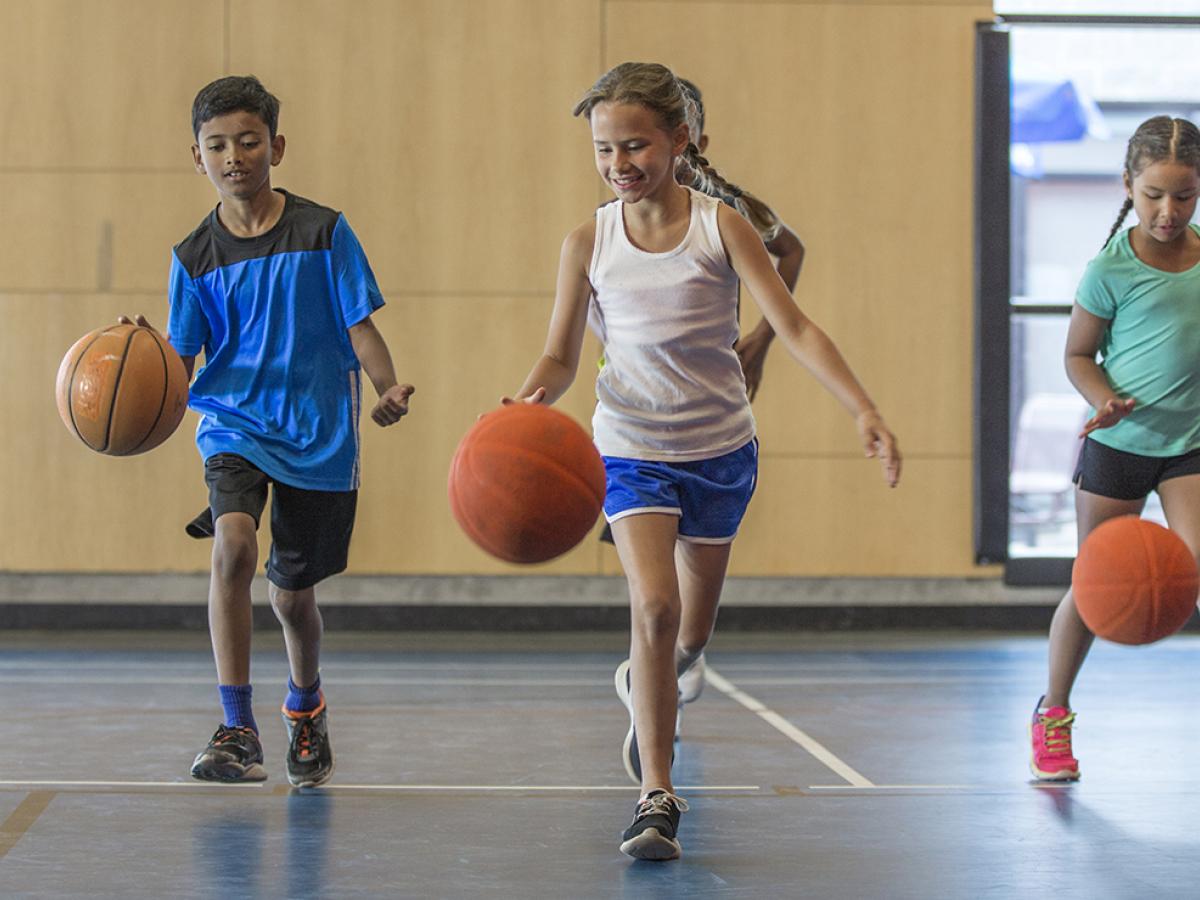July 25, 2023

We introduce our children to sports to get them moving, build their self-esteem and teach them lifelong skills. And if your kid excels at or truly loves one sport above the rest, going all-in on that sport — even at a young age — may seem like a great idea.

The trouble is, early sport specialization can limit your child’s physical development and increase the risk of injury, according to Dr. Aaron Gray, an MU Health Care sports medicine doctor.
But how many sports are too many? And is there ever a right time to specialize?
To answer those questions, Dr. Gray shares why playing multiple sports is important and how to determine the right balance for your child.
Advantages of Playing Multiple Sports at a Young Age
Exposing young children to different sports is healthy. It can help them:
- Avoid overuse injuries associated with repetitive motion
- Build strong interpersonal skills as they learn to navigate various team dynamics
- Develop well-rounded athleticism that includes fine and gross motor skills, strength and cardiovascular endurance
- Identify physical activities they enjoy, giving them a lifelong appreciation for exercise
“The purpose is getting kids active, developing their bodies and exposing them to sports they might enjoy for the rest of their lives,” Dr. Gray says. “Studies show that overuse injuries and burnout increase when kids focus on a single sport at a young age.”
Why Age Matters When It Comes to Sports Specialization
Until a child finishes growing, their bones contain weak, vulnerable areas. Called growth plates, these softer areas of bone are where bone growth occurs. They are the last part of the bone to harden, and until they do, they are subject to fracture.
“When kids are growing, their growth plates are the most vulnerable part of their body,” Dr. Gray says. “When you’re repeatedly stressing the same growth plate at a young age by playing the same sport, it’s more likely to fracture and affect growth.”
Growth plates close (harden) in different phases, but most are closed when growth stops after puberty. Girls tend to stop growing younger than boys, so their growth plates close sooner. As growth plates close, the risk of injury decreases.
Finding the Right Balance in Youth Sports
The sports your child decides to play can depend on many factors, including:
- What they enjoy
- What they have access to
- What works for your family
But to make sure your child’s sports mix is balanced and safe, Dr. Gray recommends the following tips:
Choose sports that engage different muscles and skills
Different sports focus on different athletic skill sets. Some sports, such as soccer or cross country, focus on cardiovascular health and building endurance. Others, such as tennis and baseball, improve hand-eye coordination.
“Playing sports that focus on a variety of skills helps kids develop in a balanced way,” Dr. Gray says. “Having that early experience with various athletic skills also makes it easier for them to stay active as adults.”
Pay attention to sports that involve unnatural motion
Certain sports tend to cause more overuse injuries — usually those involving an unnatural human motion.
“The human body is not made to throw an object over and over as hard as possible,” Dr. Gray says. “And we aren’t made to do back handsprings and cartwheels that may stress our wrists. We don’t see the same type of injuries in soccer because the human body was made to run.”
This doesn’t mean your child shouldn’t participate in sports that involve unnatural motion. Just be aware that there’s a risk of overuse, and make sure they rest those areas of the body.
Limit the hours your child plays one sport
Youth sports often involve a substantial time commitment, especially on a more competitive level. It’s easy to get carried away with practices, games, tournaments and personal training. But Dr. Gray says it’s important to have boundaries regarding how much time your child spends weekly playing a single sport.
“Kids should not be playing more hours a week of one sport than they are years old. That means a 12-year-old should not be doing gymnastics for more than 12 hours a week,” he says. “This is not a scientific fact, but it is a good rule to live by for parents of athletes.”
Set aside time for healing and rest
Playing a different sport every season is good for growth plates and muscles. It allows time for those areas of the body to rest and recover.
But rest is essential during the season too. “When children are growing rapidly, their bodies are using more energy to help bones grow and fewer resources on healing,” Dr. Gray says. “Make sure they take time to rest and fuel their bodies properly because injuries are more common during rapid growth.”
If Your Teen Decides to Specialize in One Sport…
Many teens do eventually choose to focus on one sport. To ensure your teen athlete stays healthy, try to:
- Strengthen to avoid injury: Identify the common injuries for your child’s sport. Help your teen condition and strengthen appropriately before the season to reduce the risk of those injuries.
- Be your child’s protector: Players and parents often get pressure to play year-round, even if it means putting academics, health and happiness aside. But just because constant tournaments and games are the norm doesn’t mean it’s the safest thing for your child. It’s up to parents to support their children and speak up to protect their physical and mental health.
- Encourage communication: Your teen may be reluctant to share if they’re nursing an injury or feeling burnt out — they may not want to disappoint you or lose their identity as an athlete. Let them know they have the support of their family no matter what happens.
- Find a good sports medicine physician: If your child has pain, consult with a sports medicine physician. They understand body mechanics, know the intricacies of sports specialization and how to avoid injuries, and can teach your athlete the importance of sleep, nutrition and rest.
Next Steps and Useful Resources
- Want to learn more? Watch our free Preventing Youth Athlete Injuries On-Demand Webinar.
- Injured within the last week? See an expert at our walk-in sports injury clinic.
- Need to speak with a sports medicine expert? Find one today.
- Dr. Aaron Gray is one of the official team doctors for Mizzou Athletics. Learn more about the partnership.

